Spell Kit For Navigating Uncertainty
A set of speculative navigational instruments to accompany your spellwork.

The only thing that makes life possible is permanent, intolerable uncertainty: not knowing what comes next.Ursula K. Le Guin, The Left Hand of Darkness
As certain as uncertainty is, it is certainly not equally distributed. Some people and communities experience higher levels of insecurity than others. There are times in our personal lives where we traverse the unknown, and historical moments that pull us towards the unforeseeable. This moment right now is filled with asymmetries and inequalities. The weight of war, eruptive displacements, personal loss, and the winds of change. What does one need in uncertainty? Courage in desperation, a phone number, a list of safe houses, a network, a backpack, a ride. You need to overcome your fear, one step at a time, if only for a moment, a split second. You might need ways to sustain attention, care, hope, and building-together. Or perhaps, at this moment, you need something else entirely.
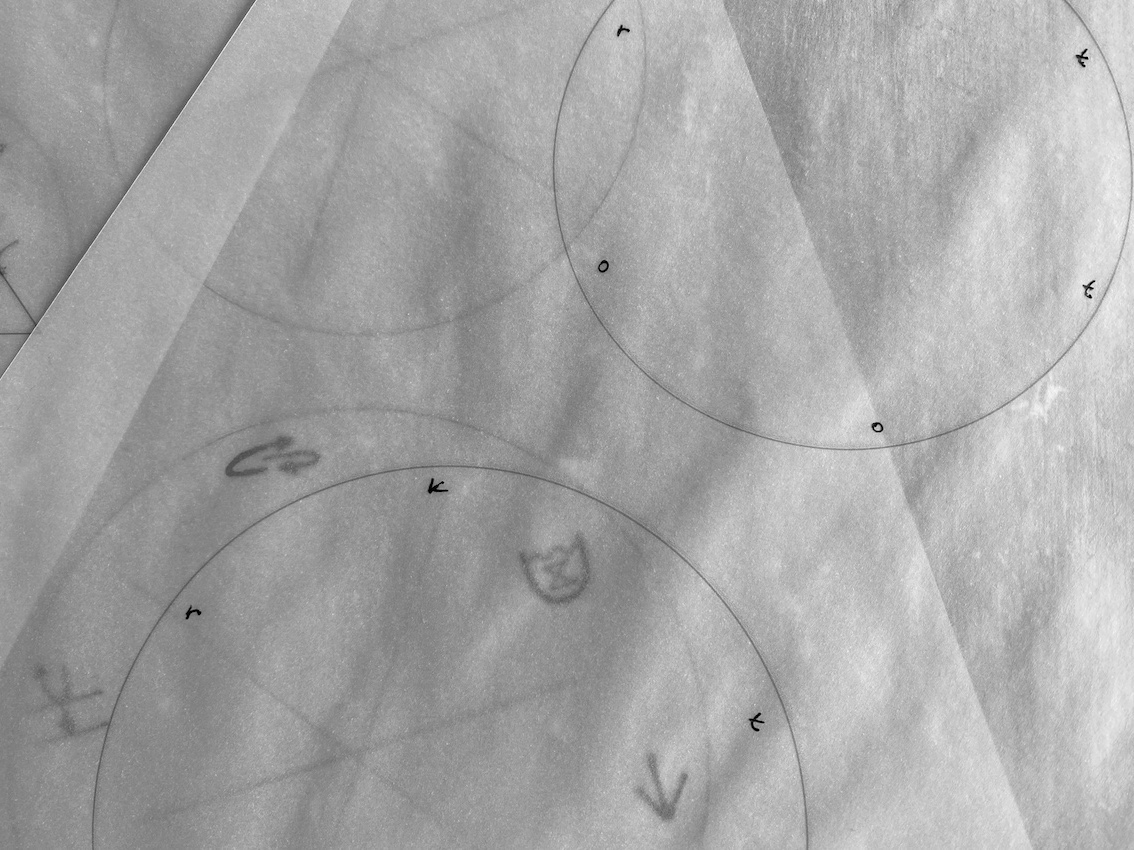
Why cast a spell?
Anyone can cast a spell, We propose spellwork as a democratic tool for organising and directing energy and attention. As a speech act, a spell gives a physical form to thought and intention. The magic of spelling-out can be a spiritual practice, a practical spirituality, a speculative action, a medicine. You might cast a spell to invoke strength, draw forth ancestral knowledge, traverse thresholds, or manipulate a change at hand.
Spellcasting holds space for non-binary potentials – neither positive nor negative – and is inherently speculative. Spells can be potent and impotent. Materials may not be at their best, language unpronounceable, timing asynchronous, and outcomes may not resemble the original intention. Spells travel – outward and around – but they begin (and exist) inside ourselves, from when they are cast until such time as we re-cast or dispel them. Spells can be uncertain and the transformations they seek can move through disorienting periods of not-knowing. There is certainty, however, in casting them.
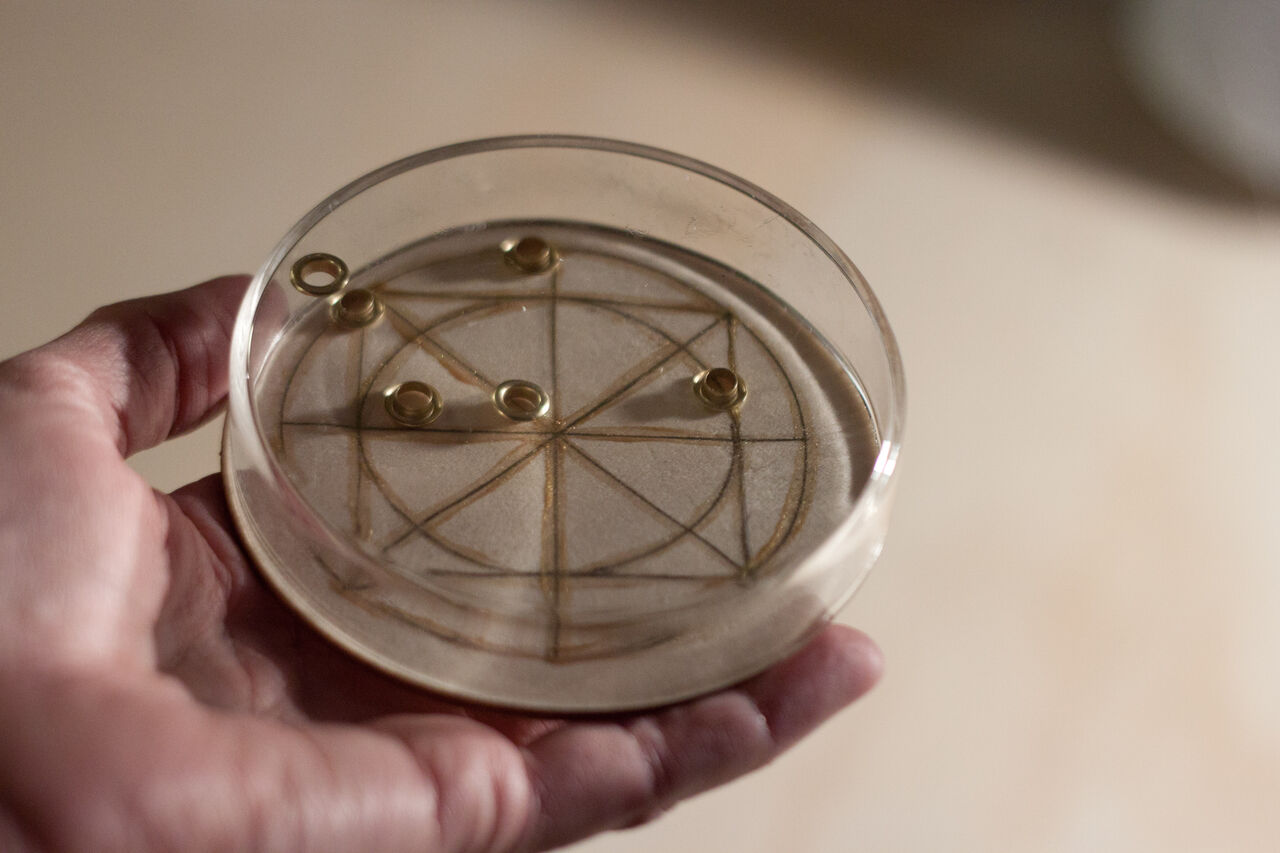
Phases of a spell
Based on our experiences of crafting and studying spells, we propose seven phases to achieve a potent spell: observation, invocation, naming, transformation, embodying, closing and anchoring.
Orientation requires taking time for observation, looking and listening without judgement to one's surroundings, or the issue you would like the spell to resolve. Knowing where you are, the state your vessel is in, which resources surround you, and what the changing atmosphere might hold, will help guide how and where to go.

Having made their observations, the spellcaster can then begin invoking those elements or allies whose qualities are needed. Calling upon allies – energies, entities and spirits – acknowledges that uncertainty should not be navigated alone. Others’ wisdom and experiences are needed to plot your course.
Naming the uncertainty, its harm, or the desired outcome is one of the most vulnerable parts of a spell. In this phase, confusion can happen, and misspellings can have unintended consequences. Ursula Le Guin writes: “Magic exists in most societies in one way or another, and one of the forms it exists in a lot of places is, if you know a thing’s true name, you have power over the thing, or the person.” To gain agency over uncertainty, correct naming is essential.
A spell is cast to create a change or shift – in matter, beings, or a situation. Once named, a transformation becomes possible. A transformation can encompass binding, cursing, blessing, banishing, changing, protecting, mending, healing, merging... Having a clear (preferably reparative) intention is important.
The transformations then need to be integrated or embodied by the spellcaster. For example, through movement, ingestion, markings on the body, an (illustrative) action such as burning herbs, evaporating water, melting ice, germinating seeds. Through integration, the spellcaster takes responsibility and agency in the ongoingness of the spell.
To minimise confusions and misspellings, and impose limitations, a spell should be properly closed. Often this is done by expressing gratitude to the invoked allies. Use a physical gesture to close your spell.
We recommend a practice of anchoring after closing a spell. This asks the spellcaster to repeat a small action over time (perhaps each hour of a day, or once a day for 21 days) in order to remember and strengthen the intention of the spell. Create a physical anchor by placing a talisman or other artefact from your spell somewhere physical – on an altar, buried in earth, launched in a body of water.
We propose that you charge the spells that you cast to stir solidarity with others experiencing even deeper incertitude as to what the next moment might bring.
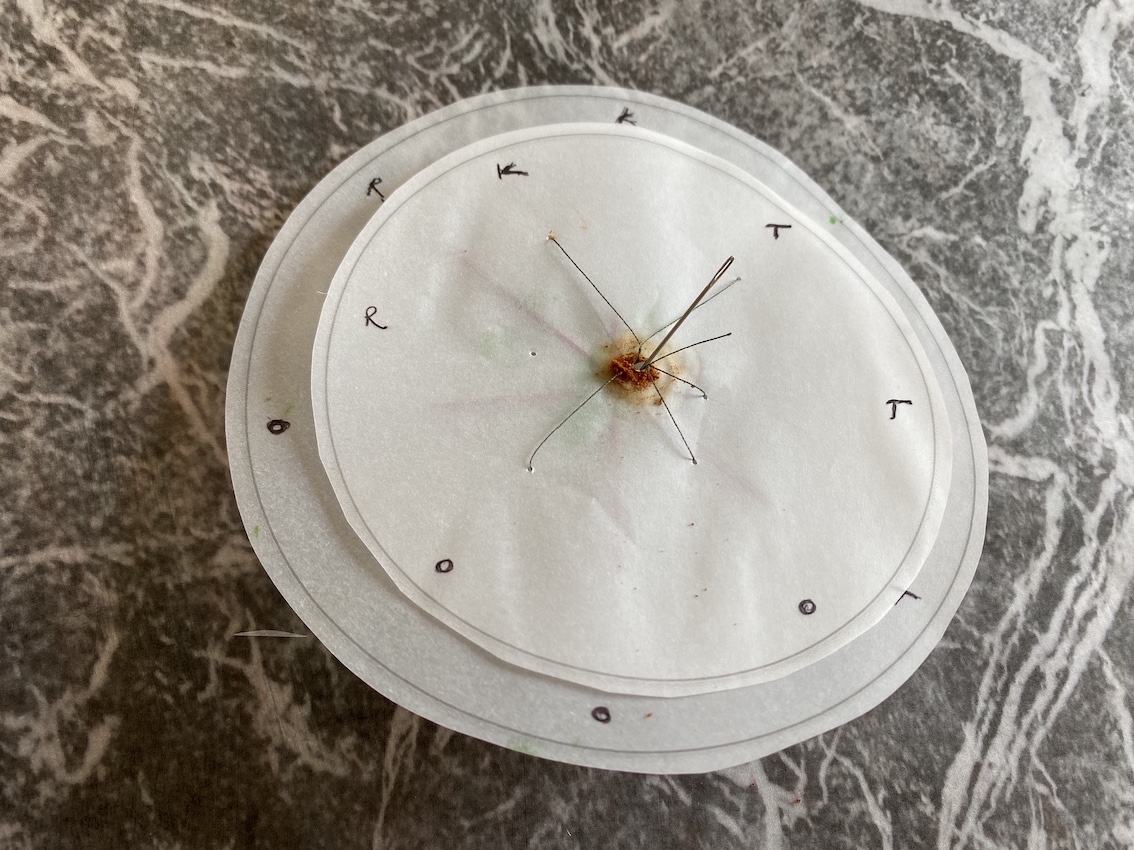
On uncertainty, navigation and getting lost
That thing the nature of which is totally unknown to you is usually what you need to find, and finding it is a matter of getting lost.A Field Guide to Getting Lost, Rebecca Solnit
Rather than stumbling around in bewilderment as we might do when confronted with loss, incertitude or change, or hacking a path through uncertainty, can we learn to roam in the uncertain landscape of the future?
There are inextricable connections between spatial mapping, memory, and self-storytelling, our perceptions of others, particularly loved ones, and grief – all of which are activated when becoming lost. Physiologically, our (human) sense of where we are is guided by head direction cells in the same region for memory making and recollecting, imagination, and future thinking. Our mamillary cells, within the hippocampus.Animal allies that may be called upon as we cast our spells (or become lost) have different cellular guides for navigation. Consider the thermal reception of snakes, the infra-red vision of wolves, the bat’s use of echolocation, or the magnetoreceptive sensitivities of turtles and birds – many species of which have been engaged as guides in traditional forms of navigation.
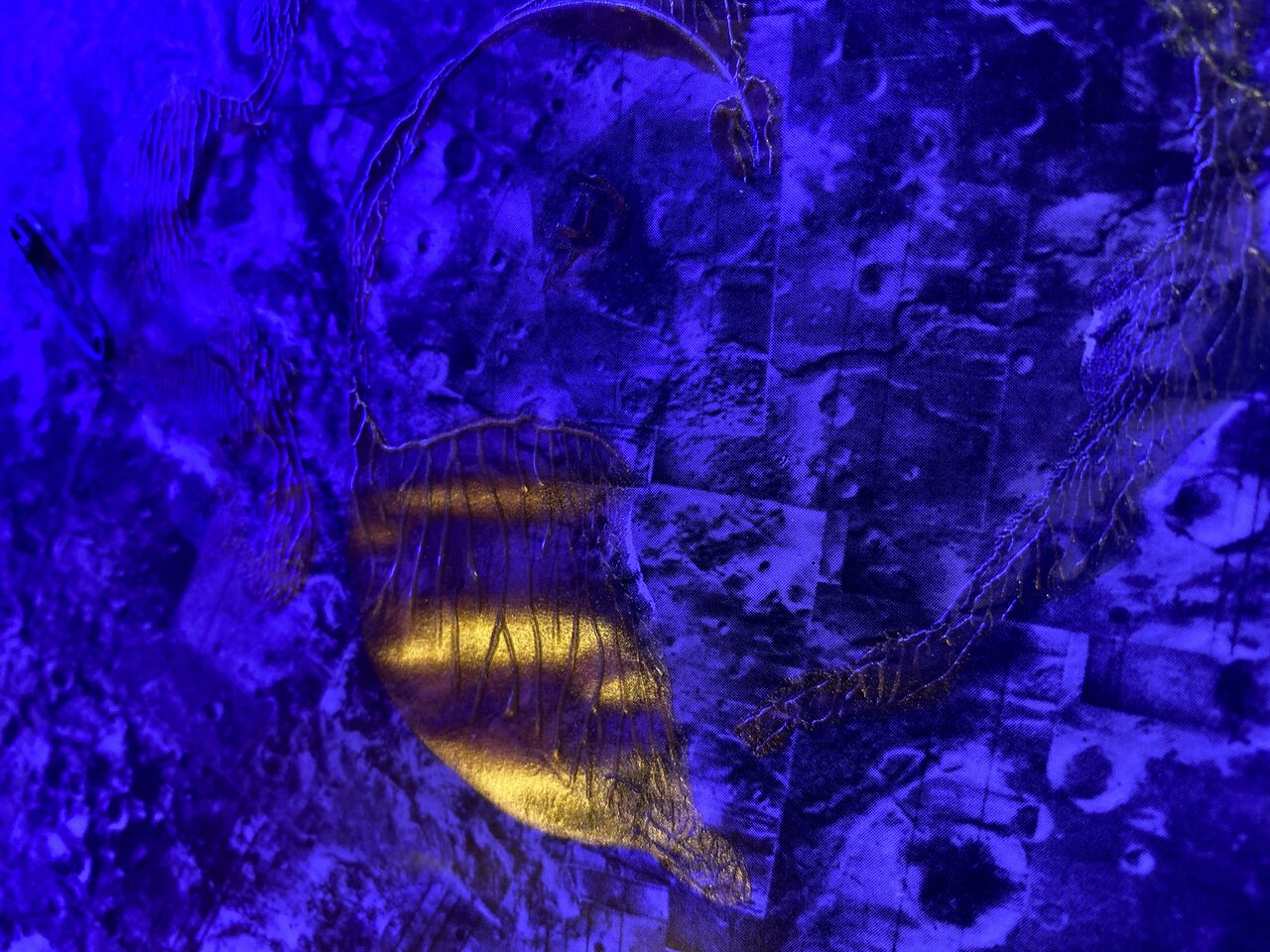
Uncertainties present a set of variables, yet certainties exist within them. Through observation we can turn certainties into waypoints, plot their coordinates on a map and apply the art of navigation. A chart of certainties could be made from the sources (of uncertainty), your tolerance for ambiguity, and the different tactics you might unfurl in your pilotage.
Concepts of direction though differ by the perceived centre or point of departure. Do we navigate by the magnetic north? A metaphysical landmark? Ourselves as the central axis? A future moment in time? Or unanswered questions of the past?
Histories and practices of navigation (and spells) travel well beyond the speculative containment of our kit – from honed sensory knowledge, practices of deep observation, complex mnemonic storytelling, craftsmanship, and cosmologies of Indigenous, First Nation, and traditional cultures to the externalisation of navigation into mechanical devices, and their instrumental role in the devastating destabilisations of colonisation.
We offer a queering, a subversion of these tools. A set of speculative navigational instruments to accompany your spellwork.
A thread to trace your path
A needle to harness energies
A compass as a guide
An artificial horizon for angular reflection
A sphere to expand perspective
A circular map to contain (un)certainty
A set of wheels to turn things around, or spin for chance to guide you
The element of time.
Devices to triangulate your position, identify waypoints, and harness imperceivable external forces. Use them in this time of disrupted sensory knowledges, in times of loss, for loss of memory or loss of way.
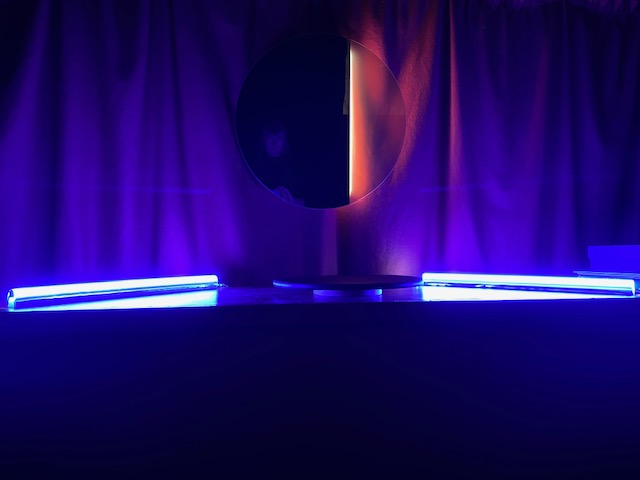
☿
Portals.